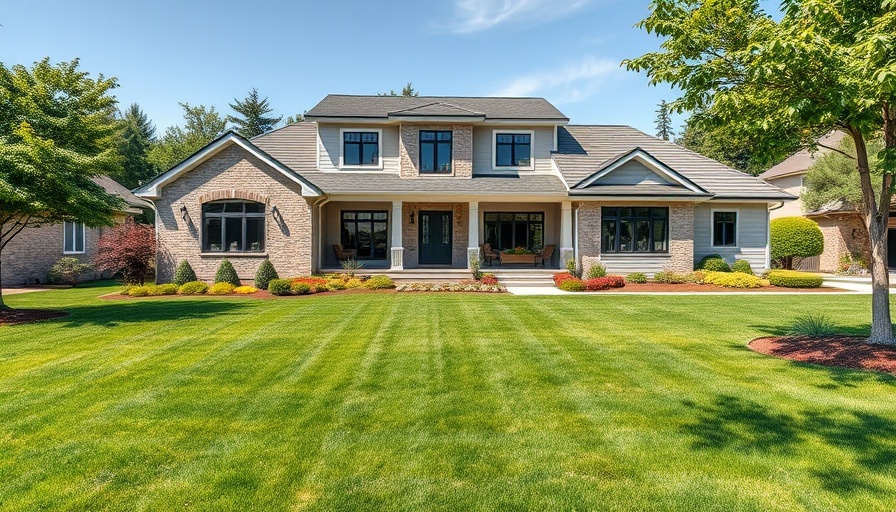
Understanding Home Appreciation: A Crucial Metric for Homeowners
A home often serves as more than just a living space; it represents a significant long-term investment that many aspire to understand fully. One of the central metrics in this endeavor is "average home appreciation per year." While national averages indicate that homes in the United States typically appreciate between 3% and 5% annually, these figures are broad estimates that can vary widely based on numerous factors.
Defining Home Appreciation and Its Influencing Factors
The historical figure of 4.27% average home appreciation between 1967 and 2024 acts as a benchmark, but it is essential to recognize that real estate values do not increase uniformly. Market dynamics, demand and supply equilibrium, and economic indicators all play pivotal roles in influencing appreciation rates.
Local market dynamics significantly impact home appreciation. For instance, neighborhoods experiencing job growth and infrastructural development generally see higher rates of appreciation compared to stagnant areas. Additionally, properties frequently undergo fluctuations in value based on their unique characteristics and local amenities, such as proximity to schools, parks, and shopping areas.
Current Trends in the U.S. Housing Market
As of April 2025, recent data from Redfin reveals that the median home price in the U.S. stands at $437,864, reflecting a modest increase of 1.3% compared to the previous year. However, it is noteworthy that the number of homes sold has decreased by 2.9% year-over-year, suggesting a cooling in market activity. This phenomenon can be related to economic uncertainties, consumer confidence, and other broader market conditions that affect spending habits.
The current national average mortgage rate, which is approximately 6.7%, has seen minor fluctuations but remains substantially higher than rates from just a few years ago. The correlation between lower mortgage rates and home affordability greatly influences demand, and thus appreciation rates, as buyers find it more accessible to enter the market.
Factors Driving Home Prices Up or Down
The interplay of various factors creates a complex landscape affecting home prices. One of the most apparent influences is the balance of supply and demand within a given market. When demand outpaces supply, which is currently seen in many urban centers, prices tend to rise rapidly. Conversely, an oversupply of homes can lead to stagnant or declining values, revealing the volatile nature of real estate investments.
Despite fluctuations at a macro level, localized factors remain at the heart of home appreciation. A well-kept condo in a thriving neighborhood, for instance, may appreciate significantly faster than an older home in a less desirable area. Moreover, renovations and improvements to a property can play a crucial role, allowing the owner to enhance market value substantially.
Local Market Nuances
Different geographical locations showcase varying trends in home appreciation. For example, the vibrant housing market in metropolitan areas like San Francisco or New York reflects performances vastly distinct from rural areas. The desirability and demand in these major cities often lead to higher appreciation rates, making them attractive to investors.
Furthermore, various real estate companies, like Realtor.com or Zillow, provide valuable market insights specific to numerous neighborhoods. Utilizing these resources can guide potential buyers through the complexities of house hunting and help them make informed decisions based on local market conditions.
Future Predictions and Real Estate Trends
As the housing market continues to evolve, observing trends in home appreciation will remain vital for potential investors and homeowners. Economic indicators, including employment rates and inflation levels, will be crucial in predicting how home values may shift. The possibility of increasing interest rates could also dampen future appreciation, emphasizing the need for constant vigilance in real estate investments.
Buyers will benefit from staying connected with expert real estate agents who can provide personalized insights and guidance tailored to their specific situations, further helping to understand how the evolving market could impact their purchasing decisions.
In conclusion, understanding average home appreciation is more than just tracking numbers; it’s about recognizing the myriad factors influencing your investment. Whether you are considering a new construction home or an apartment for rent, keeping up with real estate trends will aid you in making educated decisions that will benefit your financial future.
 Add Row
Add Row  Add
Add 



Write A Comment